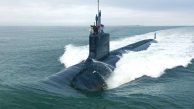
Why the B-52 is outliving newer bombers
The Boeing B-52 Stratofortress has earned its place in history as one of the most enduring and iconic military aircraft ever built. Introduced in 1955, this long-range, heavy strategic bomber has served as the backbone of the United States Air Force’s bomber fleet for nearly 70 years. Nicknamed the BUFF—short for “Big Ugly Fat Fellow”—the B-52 has flown in more conflicts than any other bomber and remains a vital component of America’s strategic deterrence.
Designed during the early stages of the Cold War, the B-52 was originally intended to deliver nuclear payloads deep into enemy territory. Its ability to carry a wide range of conventional and nuclear weapons, combined with its impressive range and endurance, made it an indispensable asset. Over the decades, the aircraft has adapted to the changing nature of warfare, participating in missions ranging from high-altitude bombing runs to close air support and precision strikes.
While newer bombers, such as the B-1 Lancer and the stealthy B-2 Spirit, were developed to complement or replace the B-52, none have matched its longevity or versatility. The aircraft’s robust design, coupled with a continuous stream of upgrades, has allowed it to remain relevant through multiple generations of warfare. Its capacity to carry a diverse payload, including advanced smart weapons and cruise missiles, has ensured its continued utility in both conventional and strategic roles.
One of the most significant reasons for the B-52’s enduring service is its adaptability. Over the years, the aircraft has been retrofitted with modern avionics, upgraded communications systems, and cutting-edge weapons technology. This ongoing modernisation has kept the B-52 capable of meeting the evolving demands of warfare, from Vietnam to Iraq and Afghanistan, and more recently, in deterrence missions in the Pacific and Eastern Europe.
Now, the B-52 is set to undergo one of its most ambitious upgrades yet: a comprehensive engine overhaul. The Commercial Engine Replacement Program (CERP) aims to replace the bomber’s aging Pratt & Whitney TF33 engines with more efficient and reliable modern engines. This upgrade is expected to significantly improve the aircraft’s fuel efficiency, range, and maintenance needs, ensuring that it remains a cost-effective platform for decades to come. With these new engines, the B-52 is projected to remain in active service until at least the 2050s, at which point some airframes will be approaching a remarkable 100 years of operational use.
The B-52’s longevity is a testament to its robust original design and the ingenuity of the engineers who have kept it flying for nearly seven decades. However, its continued relevance also raises important questions: How has the B-52 outlasted bombers specifically designed to replace it? And what role can a centenarian bomber play in the modern U.S. Air Force?
One key factor in the B-52’s endurance is its sheer versatility. Unlike more specialised aircraft, the B-52 can perform a wide array of missions, from carpet bombing and maritime surveillance to electronic warfare and nuclear deterrence. Its large payload capacity and flexible mission profile make it a valuable asset across various conflict scenarios.
Additionally, the B-52’s maintenance and operating costs are relatively low compared to more advanced aircraft like the B-2 Spirit. The stealth technology of the B-2, while groundbreaking, requires extensive and costly maintenance to remain effective. In contrast, the B-52’s simpler design and rugged construction make it more cost-effective to operate, especially for missions that do not require stealth capabilities.
Looking ahead, the B-52 will continue to play a critical role in the U.S. Air Force’s future force structure. As newer platforms like the B-21 Raider come online, the B-52 will complement these advanced stealth bombers by handling missions that do not necessitate stealth, thereby preserving the operational life of the more advanced aircraft. Furthermore, the B-52’s ability to carry hypersonic weapons and other next-generation payloads will ensure that it remains a vital part of America’s strategic arsenal.
The prospect of a bomber celebrating its centennial in active service is unprecedented. Yet, the B-52 has proven time and again that it is more than capable of meeting the challenges of modern warfare. Its long and distinguished service record, combined with ongoing upgrades, highlights the enduring value of a well-designed aircraft. As it approaches its 100th birthday, the B-52 Stratofortress will continue to serve as a powerful symbol of American airpower and innovation, demonstrating that sometimes, the old adage holds true: If it isn’t broken, don’t fix it—just keep making it better.



